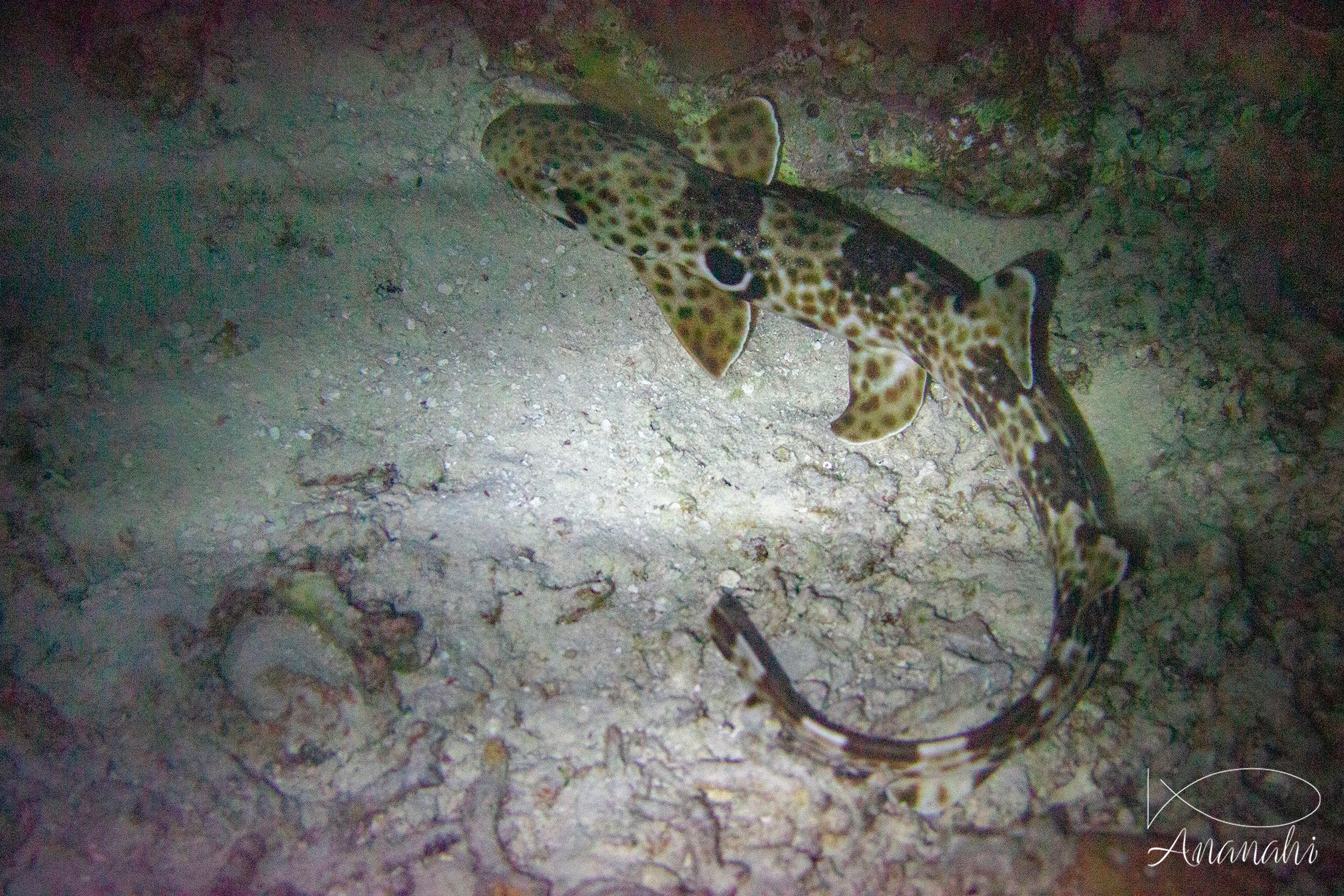
Scientific name: Hemiscyllium ocellatum
Size: From 2,3 to 3,3 feet
Color: Beige and brown
Distinguishing feature: This fairly small shark crawls on the ground with these fins when moving. His body is composed of multiple brown and black spots.
Where did we see it: Raja Ampat

Scientific name: Hemiscyllium ocellatum
Size: From 2,3 to 3,3 feet
Color: Beige and brown
Distinguishing feature: This fairly small shark crawls on the ground with these fins when moving. His body is composed of multiple brown and black spots.
Where did we see it: Raja Ampat
This passive shark moves very little, you will have a better chance of seeing it move on a night dive!
It has two large black spots behind his head on each side of his body.
Unlike other sharks, they have to chew their food for 5 to 10 minutes. His teeth have disappeared to leave room for a flat surface to break the prey shell.
The whale shark is the largest fish in the world!
Some whales are larger, but they are mammals, not fish!
Some sharks can stay motionless on the sand (white tips reef sharks, nurse sharks, etc.).
These sharks don't have to swim to bring oxygen to their gills like other sharks (grey, hammerheads tc.)
Turtles are in economy mode when they are sleeping. If they are woken during night, they may not have enough air to return to surface.
So, please be careful during night dives!